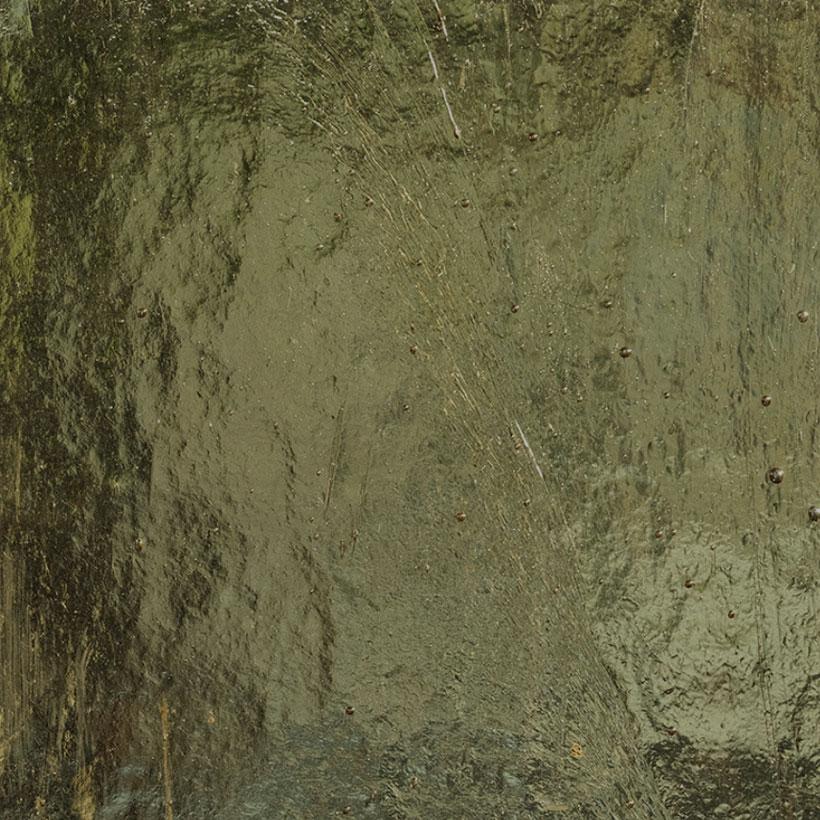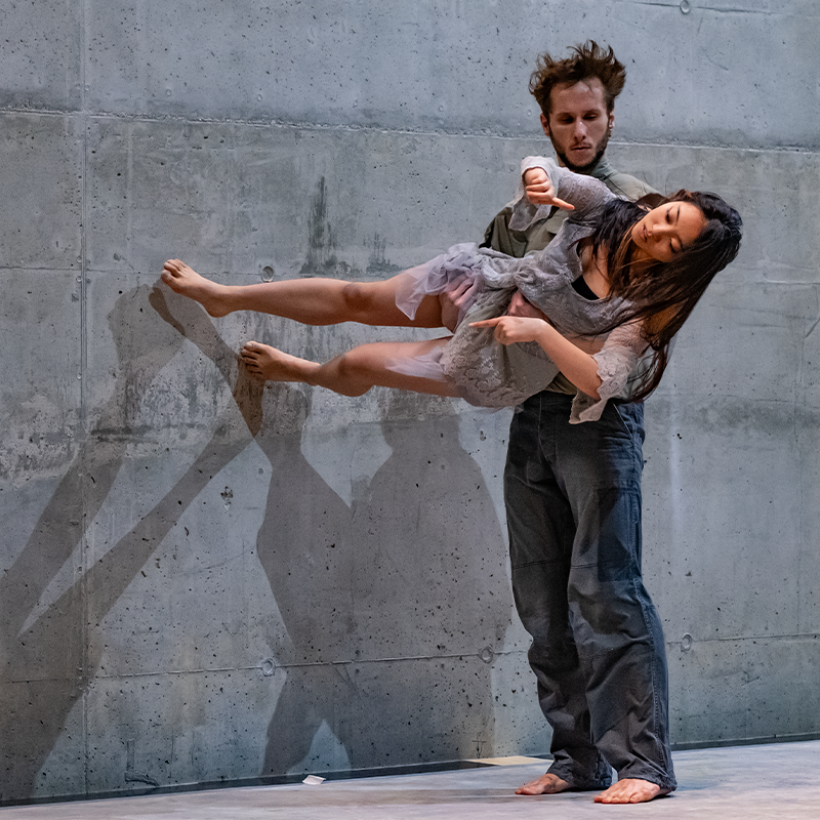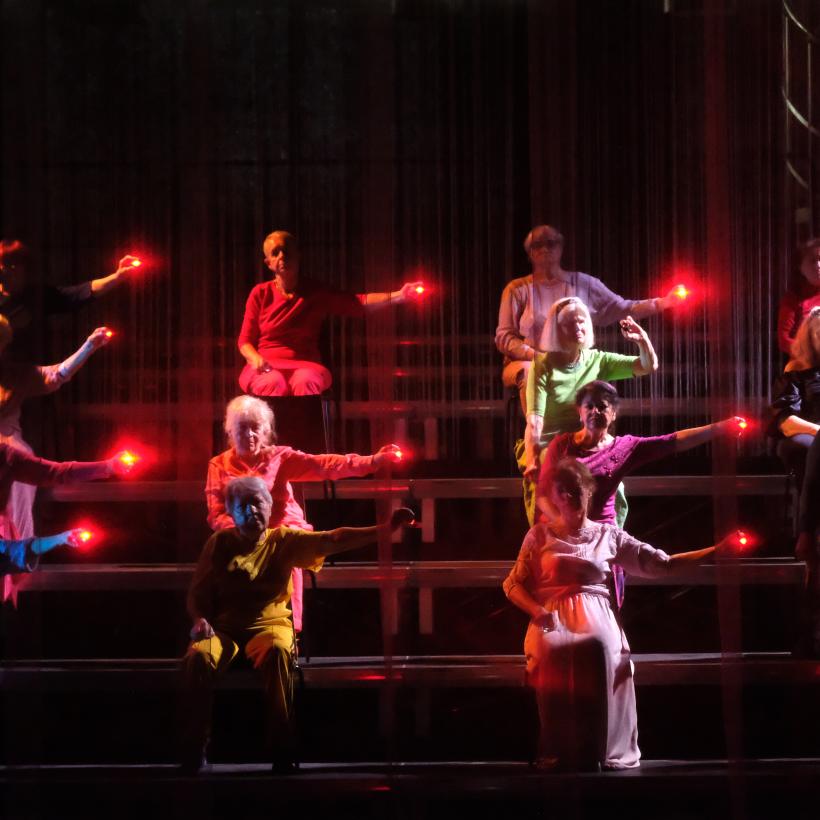

Choreography: Rainer Behr
Performance Assistant: Halyna Shchupak
Costumes: Yaryna Karasova
Scenography: Andrzej Grabowski
Visualization concept: Izabela Sitarska
Design and development of visualization: Maciej Waleszczyk
Light Direction: Michal Stenzel
Music: Dawid Dąbrowski
and Arne Bredesen, Jens-Jonas, Francis Roberts, Nicolas Leirtrø / Teip Trio, Fabio del Carro i Camilla Margherita Ferrari / A Tergo Lupi, Carl Craig, Dakh Daughters, Marko Halanevych / DakhaBrakha, John Hope, Ema Jolly, Nouseskou, Shortparis, Colin Stetson & Sarah Neufeld, Amon Tobin
Dancers of the premier cast:
Maximilian Bańdo
Evelyn Blue
Momoko Den
Julia Hnatów
Patryk Jarczok
Mateusz Krzysiak
Aleksandra Kuś
Daniel Michna
Katarzyna Niżnik
Costume Asistant: Adriana Cygankiewicz
Sound and video realization: Michal Beszczyński
Technical direction: Dariusz Szych
Time of Questions: How does a person experience themselves in a time that moves so quickly and knows no brakes? Through the desire for immortality, optimized into a superhuman, and through fusion, becoming a new species of organic and inorganic? Humans become machines, machines become humans. What happens to the ape that threw the tool into the air, from which a spaceship was created, and later worlds were formed that no one needs to inhabit to live in them? What occurs in a virtual world where everything can be manufactured? How dependent will we become when every desire can be satisfied? What happens when we can remove emotions, and what will touch mean when there are no more tears? What happens to love and fear? Will we lose ourselves, or find ourselves, become lonely, or unite, move toward each other, or drift apart? Will it be liberation or imprisonment? Life or death? And what relevance does the Earth have for us then?
Time to ask: How do people see themselves in a time that is passing so quickly and knows no brakes? Through the desire for immortality, optimizing themselves, becoming superhuman and through fusion, creating a new organic and inorganic species? Man becomes machine, machine becomes man. What happens to the ape that threw the tool from which the spaceship was created into the air and that will later create worlds that no one will have to populate to live in them? What happens in a virtual world where everything can be manufactured? How dependent do we become when every desire can be satisfied? What happens when we can get rid of feelings, and what will touch mean when there are no more tears? What happens to love and fear? Will we lose each other, will we find each other, will we become lonely, will we reunite, will we get closer to each other, or will we move away from each other? Will it be liberation or imprisonment? Life or death? And what meaning does the Earth still have for us?"
.Zeit der Fragen: Wie erlebt sich der Mensch, in einer Zeit, die sich so schnell bewegt und keine Bremse kennt? Durch den Wun sch der Unsterblichkeit, sich zu einem Übermenschen optimiert und durch Fusion, eine neue Spezies aus Organisch - und Anorganischem wird? Mensch wird zur Maschine, Maschine zum Menschen. Was geschieht mit dem Affen, der das Werkzeug in die Luft warf, aus dem ein Raumschiff wurde und später Welten schafften wird, die niemand bevölkern muss, um in ihnen zu leben? Was geschieht in einer virtuellen Welt, in der alles herstellbar ist? Wie abhängig werden wir, wenn jedes Verlangen befriedigt werden kann? Was passiert, wenn wir Gefühle entfernen können und was wird dann Berührung bedeuten, wenn es keine Tränen mehr gibt? Was geschieht mit der Liebe und der Angst? Werden wir uns verlieren, oder finden, vereinsamen, oder vereinen, aufeinander zusteuern, oder voneinander weg? Wird es Befreiung, oder eine Gefangenschaft? Leben oder Tod? Und welche Relevanz hat dann noch die Erde für uns?
.In this new reality, art ceases to be just a reflection, it becomes a reinterpretation, an attempt to make sense in a world devoid of emotion. How will a new aesthetics of love, fear or longing emerge when touch, feelings and even death lose meaning? What about us - human beings - when we enter this new order, in which there is no longer room for randomness, true expression, but only control and precisely designed forms?
And in this context appears the Monolith - a mysterious, almost divine symbol of the quest for transcendence, which becomes not only a witness, but also a catalyst for these transformations. The Monolith, in its impersonal, motionless form, reminds us of the quest to understand the incomprehensible. But in this new world, where the boundaries between man, machine and art are blurring, the Monolith poses the question: does this transcendence lead to liberation, or rather to a new kind of enslavement that deprives us of that primordial magic, that mystery of existence that makes us human? In this uncertainty of being, will we be able to find ourselves, or sink in a digital ocean in which there is no longer room for true existence?"




